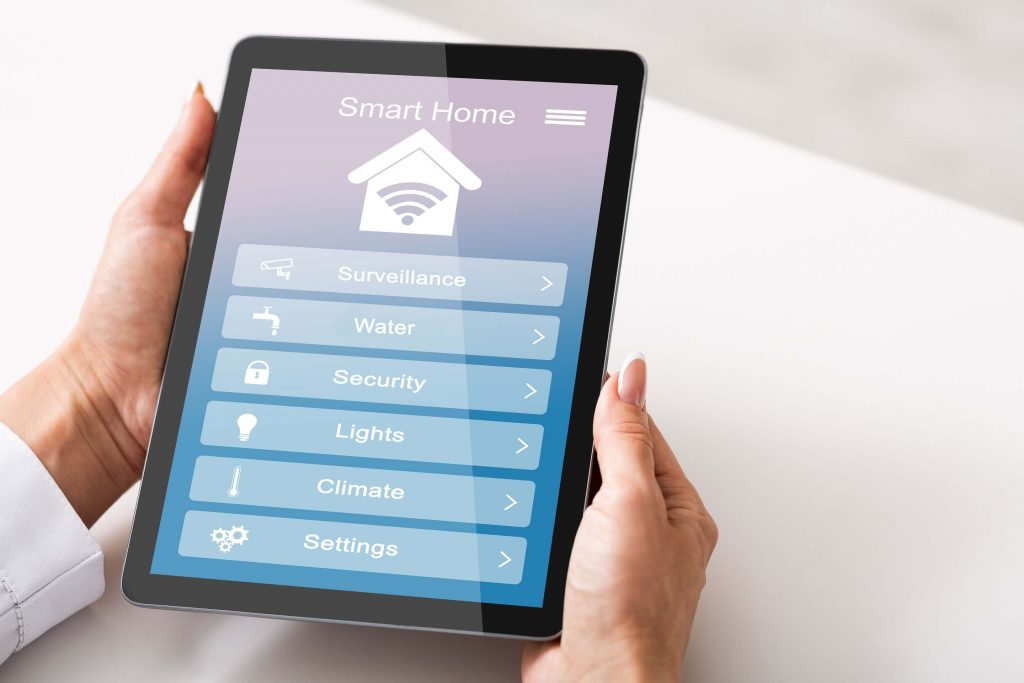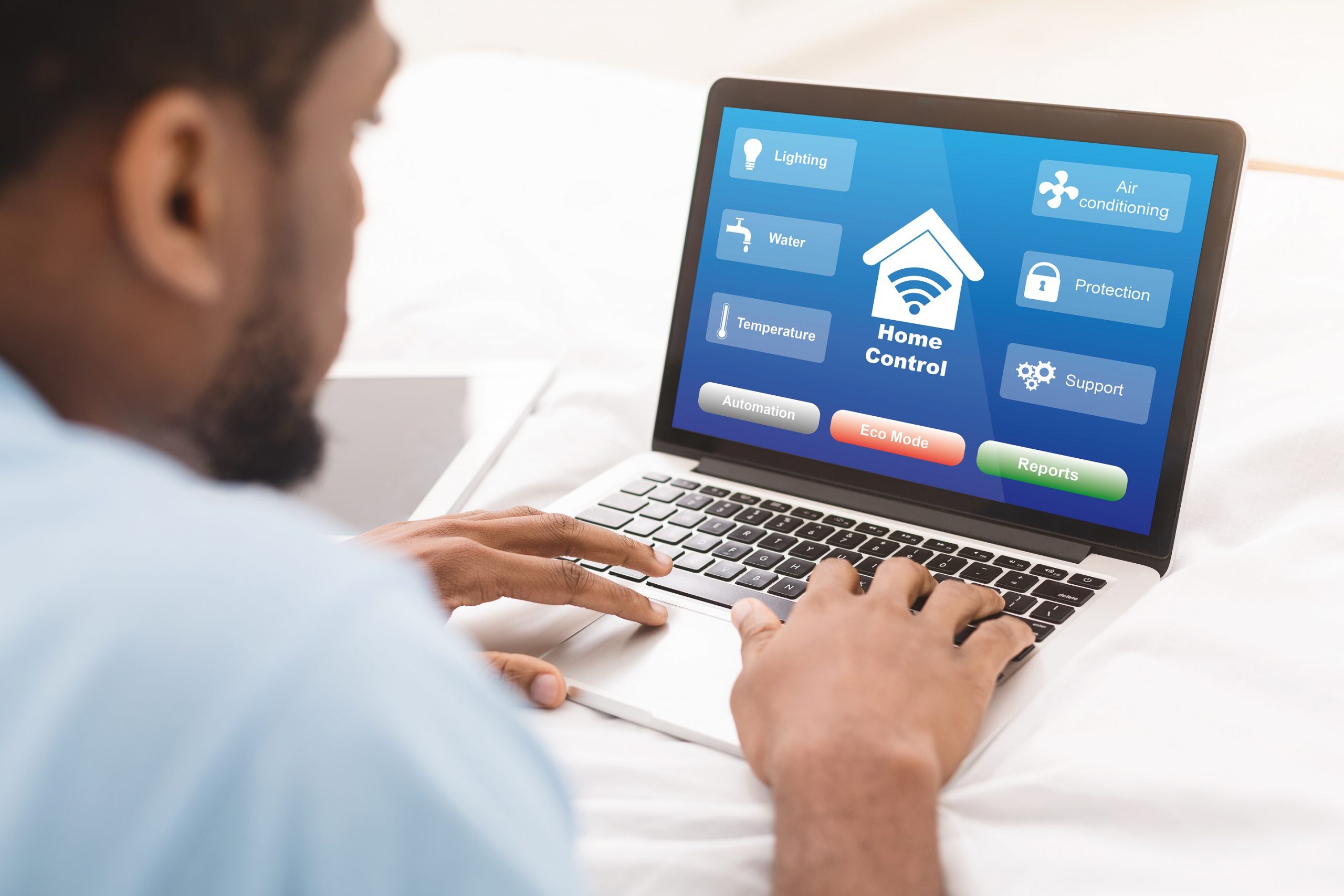Check out these ways you can make your home smart!
Do you want to have more control over your energy use? Do you want to automate your home features like irrigation, security systems and smoke detectors? How about remote programming of your home’s lights and thermostat?
If you answered yes, then it’s time to make your home smart.
There are three things you need to turn your regular home into a smart home:
- A WIFI connection.
- Smart home appliances or devices.
- A smart home system to connect, monitor, and control these devices.
Smart homes are a great way to help save you time, money and energy in your household. Check out this page to learn more about turning your home smart.
Internet Connection
The first step to turning your home smart is to determine what internet speeds you need. Take a moment to count how many WIFI-connected devices you have in your home. This includes laptops, tablets, smartphones, gaming consoles, and smart TVs.
It is also important to think about how many of these devices are operating simultaneously. Perhaps you work from home attending online conferences. You may have roommates or children who are streaming videos and attending virtual classes.
Once you have the number of devices you will be able to choose an internet connection that is right for your home. Usually, 100 Mbps will cover 5-7 devices whereas 200 Mbps will cover 8-10. These are basic guidelines, reach out to a C3 representative to help you choose the right plan for the number of devices in your home. Remember to include all devices and appliances you will incorporate into your smart home.
Smart Appliances and Devices
Ensure you have a solid wireless network in place, one that can reach all corners of your home. Once you do, you can start connecting smart appliances and devices. Let’s look at the most common ways that help you build a smart home.

Lighting
For most people living in a smart home, lighting is the entry point. If you have overhead lighting, it will be best to replace regular switches with smart switches and dimmers. If you use lamps for your lighting, smart outlets will enable you to turn on and dim LED light bulbs with your smartphone. You can also schedule lighting to conserve energy.
One of the easiest features of smart home technology is also the most efficient. Studies show that widespread LED lighting leads to huge savings. Replacing your home’s existing bulbs is an inexpensive way to help save you money on bulb replacements and your energy bills. LED bulbs use approximately 50 percent less energy than conventional bulbs.
What’s more, LED lights help improve the aesthetic of any room. You can change the colour and brightness to your discretion. A must-have for those who love to entertain (and impress!).
Check out this article for the best smart bulbs.
Outlets
Another way to conserve energy is with smart outlets. Did you know electronics use power even when you’re not actively using them? This is called standby power (or vampire power) and results in a lot of wasted energy.
Smart outlets allow you to prevent wasted energy from vampire power. They provide you with the ability to remotely control when your outlets and devices are consuming energy. You can set automated rules for this sort of energy usage that aligns with your habits and lifestyle.
Check out this link for the best smart plugs to buy in 2022.
Speakers and Audio Systems
Audio systems are becoming more sophisticated and offer self-contained multi-room speaker solutions. Products from companies like Sonos and Yamaha can sync all your speakers or send different tracks to each one. For TV and film buffs, added soundbars greatly improve your show and movie-watching experience. This is a must-have when you invest in an Ultra-HD television.
Likewise, smart speakers allow spoken demands to connect with your smart appliances and devices. Dim the lights, turn on music and add items to your grocery list, all with your voice. These personal assistants are an essential part of your smart home foundation.
Check out this article for the best smart speakers
Thermostats
Smart thermostats are another effective way to implement comfort and cost/energy savings in your home. They monitor usage over time to optimize your energy use based on home heating and cooling patterns. Smart thermostats adjust operation times on their own, limiting energy consumption when you aren’t home. These devices detect when you are away so that your system only operates when it is needed.
Furthermore, smart thermostats can be equipped with sensors that operate based on the rooms you frequent most and where you are in the house. This limits the heating and cooling cycles used in rooms rarely used. These small adjustments equal big energy savings.
Check out this article for reviews on smart thermostats.
Security Cameras
Indoor and outdoor cameras enable you to keep watch on your home when you are away. Outdoor cameras allow you to monitor what is happening on the perimeter of your home while indoor models help you observe children and pets.
Security cameras are a useful tool to keep unwanted trespassers off of your property. Their popularity has helped drive prices down, making them an affordable security solution for your home.
Check out this article to learn more about the best wireless security cameras.
Locks & Doorbells
These devices add another layer of convenience and security to your home. With a smart doorbell, you can see who is at the front door from anywhere in the house.
Most devices are equipped with remote monitoring when outside the home. Smart locks allow you to lock your doors when you are away from home.
Check out these pages for the best smart doorbells and smart locks.
Smoke and Carbon Monoxide Detectors
Conventional smoke and carbon monoxide detectors are far more effective if you make them smart. These devices will do three important things: sound a local alarm, send an alert to your phone and notify your authorized contacts when danger is detected. Conventional alarms may be loud, but are useless if no one is home to hear them.
Some models have functional lights that allow you to find your way out of a smoke-filled house. Others provide a smart speaker that gives directions in the event of an emergency. For budgetary purposes, smart batteries make your conventional smoke and carbon monoxide detectors more intelligent.
Check out this article to learn more about smart detectors and alarms.
Irrigation
Irrigation systems help ensure your lawn and garden get enough moisture to be healthy and vibrant without wasting any water. Now, they are more consumer-friendly and can be programmed by your smartphone rather than complex controllers. A smart irrigation system will help you save money and time.
Check out these reviews of the best smart irrigation systems.
Kitchen
There are plenty of smart appliances that you can add to your kitchen to make it more intelligent. Smart fridges can view what’s inside so you don’t forget items at the supermarket. Smart garbage bins can scan barcodes on the bottom of food containers to help with grocery lists, as well. Smart slow cookers allow you to adjust your cooking even when you are outside the home. Smart plates and forks allow you to monitor caloric intake if you are watching your weight.
Check out this article to learn more about cool gadgets for your kitchen.
Turning your home into a smart home is best done gradually – completely transforming everything at once can be a costly endeavor. As you add more features, you’ll be able to realize the greatest benefits of smart home technology: integration. These integrations will allow you to increase security, reduce spending and increase availability in your schedule.
Smart Home System
The smart home system is the central command of your smart home. It gathers unique data from your smart appliances and devices enabling you to control them all in one place. The smart home system’s main job is to integrate your smart devices to create a simple arrangement of task automation.
Our favourite smart home system is the Plume HomePass. Plume HomePass empowers you to control and manage your home WiFi. The Plume pods spread internet connectivity to every corner of your home. The Plume HomePass services include adaptive WIFI, internet control, and high-performance security features.
Check out this interesting article to learn more about the benefits of the Plume HomePass,
There have been many improvements in smart home technology. Before these improvements, automating your home involved hardwiring systems throughout the entire house. Now, home automation allows WIFI-enabled devices to connect seamlessly with one another. Modern smart home systems make it possible to automate tasks from the convenience of your smartphone.
Start turning your home into a smart home – one that works both with you and for you. Explore options that make the most sense for your home, budget, and lifestyle. Make life easier and benefit from the advantages that come with a smart home.
Contact a c3 representative to get started. Email info@c3.ky or call 333-3333 today!

